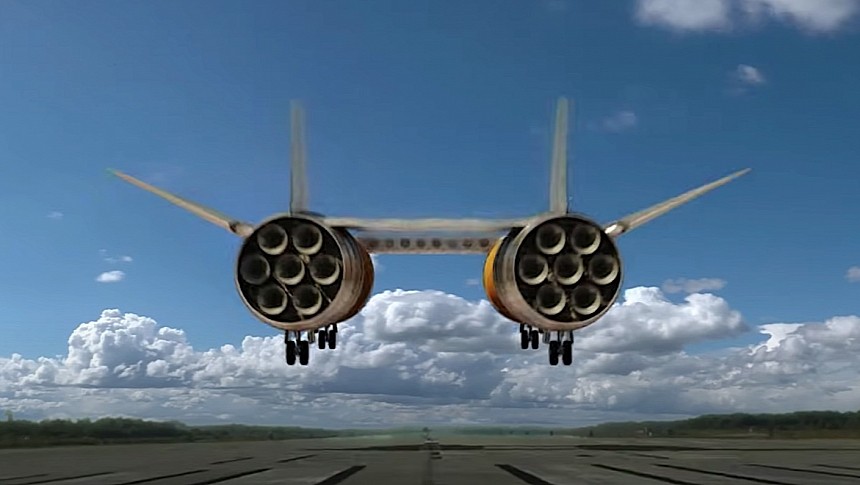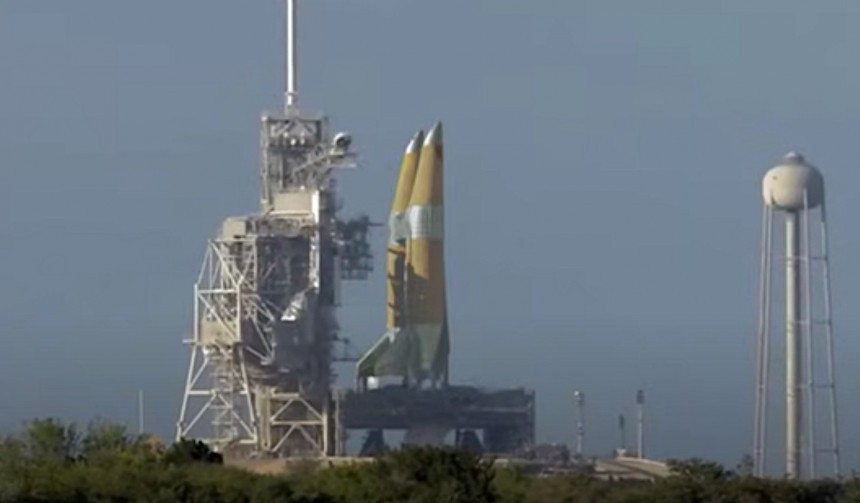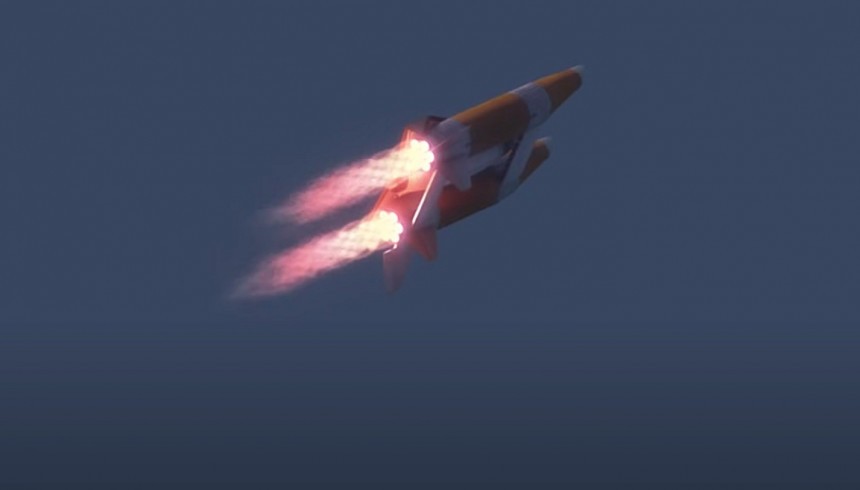Although it was nothing more than a sort of commuter ride between the surface of our planet and low-Earth orbit (meaning it didn't go to much more glorious places like the Moon or Mars), the Space Shuttle was one of the most successful spaceships ever constructed.
Meant as a reusable, cheaper way to take astronauts to the International Space Station and to orbit, the Space Shuttle program ran from 1981 to 2011. It included five spaceships (Columbia, Challenger, Discovery, Endeavour, and Atlantis) which flew for a total of 134 times, completing 20,952 Earth orbits.
In all, 848 people took to space on board of these ships, and they traveled for a combined 537 million (864 million km). The fleet of ships spent a total of 1,320 days beyond our planet's borders.
Like all other such important endeavors of the human race, the Shuttle program was not without tragedy. Two of the five spaceships were destroyed in accidents, taking with them a total of fourteen people.
The first to go was the Challenger, which blew up while taking off for mission STS-51-L in January 1986. The ship had nine other successful flights before, but a failure in the O-ring seals of the right solid rocket booster sparked a chain reaction that caused the spaceship to explode.
The second and final Shuttle to be destroyed was the Columbia. It disintegrated upon reentry after completing mission STS-107 back in 2003, killing seven astronauts. The reason for the ship's failure was the failure of a piece of insulating foam. At the time of its destruction it had 28 successful missions under its belt.
Despite the impact they've had, these two major tragedies did not stop the program, which ended in 2011 with the final flight of the Atlantis. Nor do they make any of the above numbers less impressive.
But, as usual when it comes to such incredible pieces of engineering, a lot of work, most of it never recognized, was performed beforehand. Ideas and concepts were thought of and then disregarded, despite a number of them looking particularly impressive even on paper.
Before settling on the final design of the Shuttle, NASA rejected a number of other ideas, a bunch of which did have the potential of redefining space exploration from its early days.
One such design is that of the Spacemaster. It was the work of a company called Martin Marietta, which in our day and time makes up the Martin half of Lockheed Martin. The design was submitted to the American space agency in 1967, at a time when the hunt for new engineering ideas in this field of human activity was at its peak. It's an idea that, like so many others, was eventually rejected by NASA's higher-ups.
The operational design of the Spacemaster is not unlike that of the Space Shuttle, which kind of makes the ship a sort of forefather to the spaceship that was eventually approved. Especially if you take into account the fact that Martin Marietta went on to design and build the external fuel tank of the actual Shuttle.
There are, of course, some very important core differences. The most important has to do with how the many parts of the concept come together. Whereas the spaceship that actually got to fly was strapped to a core stage and two boosters, the Martin Marietta idea placed a delta-wing orbiter in a recess between the boosters, with no main tank. The boosters, in turn, were strapped together by connecting struts which also acted as support for the orbiter.
The spaceship itself was based on the X-24 experimental aircraft, used by NASA and the U.S. Air Force to test lifting body flying. It's a plane flown from 1969 to 1973 that somehow became instrumental in the design of the Shuttle, as it too was taken to the sky for unpowered reentry and landing after being dropped from a B-52 Stratofortress.
In the Spacemaster application the orbiter was to be pushed into orbit by liquid-propellant boosters powered by 14 engines tied together in clusters of seven. They separated when a set altitude was reached and glided back down to land on a strip.
That's right, both the spaceship and the hardware meant to launch it into space would have been reusable, decades before SpaceX made such an approach commonplace. Hence, the system's approval and its subsequent production would have probably put American space exploration efforts on a different path altogether, and who knows where we'd be today.
As it stands though, history books have relegated the Spacemaster to the great-ideas-that-never-came-to-be section. The spaceship never got to fly, but a model of it was constructed, and it can be admired in the Smithsonian National Air and Space Museum.
But that's a static display, and doesn't do the hardware any justice. The CGI video below, put together by specialist Hazegrayart, does, and we recommend you have a look at it to see yet another impressive concept our world missed out on.
In all, 848 people took to space on board of these ships, and they traveled for a combined 537 million (864 million km). The fleet of ships spent a total of 1,320 days beyond our planet's borders.
Like all other such important endeavors of the human race, the Shuttle program was not without tragedy. Two of the five spaceships were destroyed in accidents, taking with them a total of fourteen people.
The first to go was the Challenger, which blew up while taking off for mission STS-51-L in January 1986. The ship had nine other successful flights before, but a failure in the O-ring seals of the right solid rocket booster sparked a chain reaction that caused the spaceship to explode.
The second and final Shuttle to be destroyed was the Columbia. It disintegrated upon reentry after completing mission STS-107 back in 2003, killing seven astronauts. The reason for the ship's failure was the failure of a piece of insulating foam. At the time of its destruction it had 28 successful missions under its belt.
Despite the impact they've had, these two major tragedies did not stop the program, which ended in 2011 with the final flight of the Atlantis. Nor do they make any of the above numbers less impressive.
Before settling on the final design of the Shuttle, NASA rejected a number of other ideas, a bunch of which did have the potential of redefining space exploration from its early days.
One such design is that of the Spacemaster. It was the work of a company called Martin Marietta, which in our day and time makes up the Martin half of Lockheed Martin. The design was submitted to the American space agency in 1967, at a time when the hunt for new engineering ideas in this field of human activity was at its peak. It's an idea that, like so many others, was eventually rejected by NASA's higher-ups.
The operational design of the Spacemaster is not unlike that of the Space Shuttle, which kind of makes the ship a sort of forefather to the spaceship that was eventually approved. Especially if you take into account the fact that Martin Marietta went on to design and build the external fuel tank of the actual Shuttle.
There are, of course, some very important core differences. The most important has to do with how the many parts of the concept come together. Whereas the spaceship that actually got to fly was strapped to a core stage and two boosters, the Martin Marietta idea placed a delta-wing orbiter in a recess between the boosters, with no main tank. The boosters, in turn, were strapped together by connecting struts which also acted as support for the orbiter.
The spaceship itself was based on the X-24 experimental aircraft, used by NASA and the U.S. Air Force to test lifting body flying. It's a plane flown from 1969 to 1973 that somehow became instrumental in the design of the Shuttle, as it too was taken to the sky for unpowered reentry and landing after being dropped from a B-52 Stratofortress.
That's right, both the spaceship and the hardware meant to launch it into space would have been reusable, decades before SpaceX made such an approach commonplace. Hence, the system's approval and its subsequent production would have probably put American space exploration efforts on a different path altogether, and who knows where we'd be today.
As it stands though, history books have relegated the Spacemaster to the great-ideas-that-never-came-to-be section. The spaceship never got to fly, but a model of it was constructed, and it can be admired in the Smithsonian National Air and Space Museum.
But that's a static display, and doesn't do the hardware any justice. The CGI video below, put together by specialist Hazegrayart, does, and we recommend you have a look at it to see yet another impressive concept our world missed out on.












